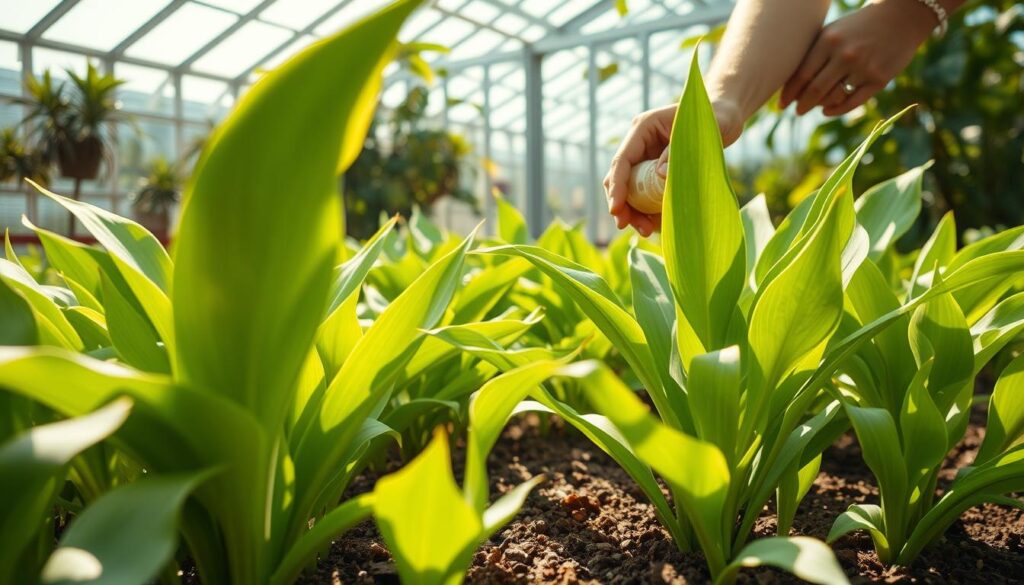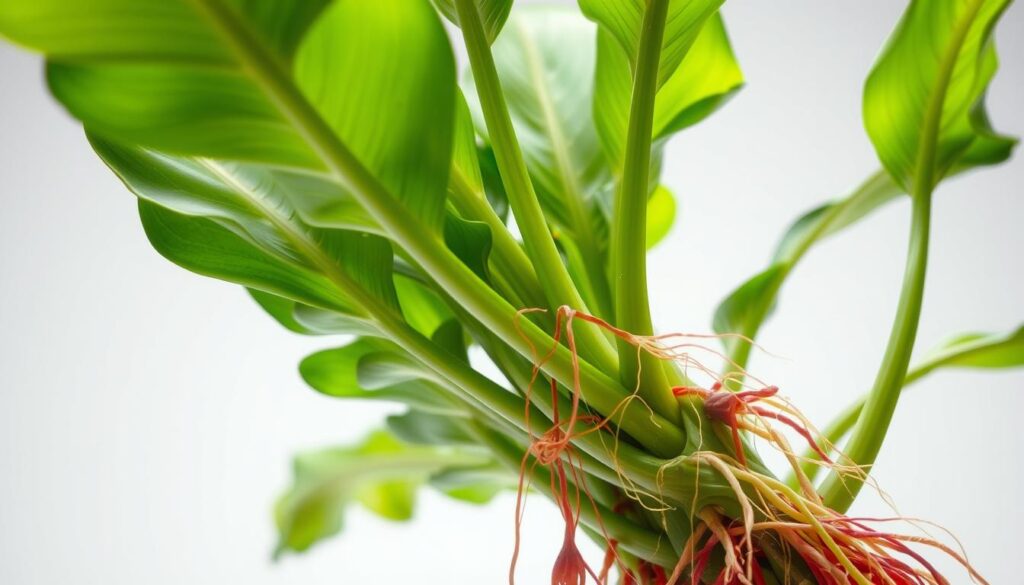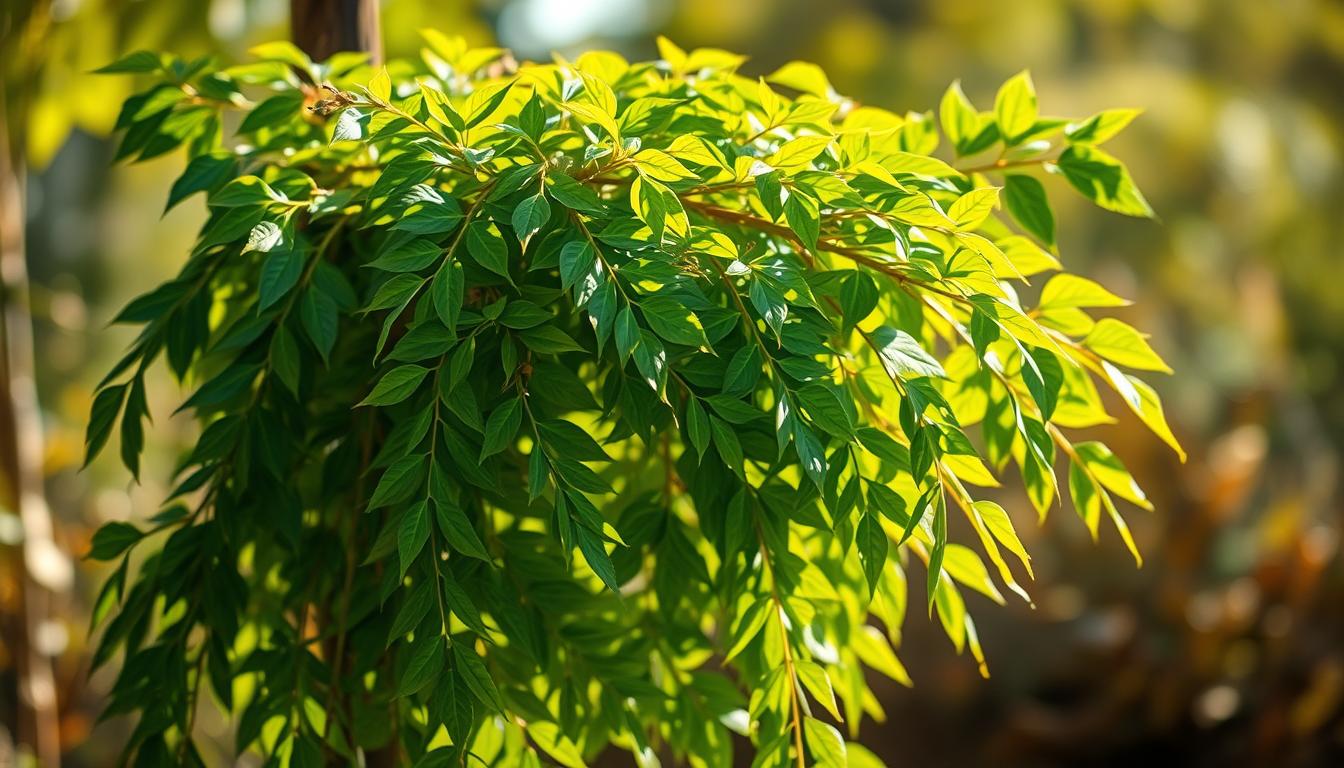Are you ready to discover houseplants that not only beautify your space but also become the centerpiece of conversations? Learning how to take care of shingle plant is easier than you think. With the right Shingle Plant Care tips, you can keep your Rhaphidophora hayi happy and thriving.
Understanding how to take care of shingle plant is key to enjoying its beautiful foliage. In this guide, we will cover the basics of Shingle Plant Care, from watering to fertilization. This will help you become a confident plant parent. Whether you’re a seasoned plant enthusiast or just starting out, our goal is to provide you with the knowledge and inspiration you need to help your Shingle Plant thrive with proper Shingle Plant Care.
Overview of Shingle Plant (Rhaphidophora hayi)
Exploring Shingle Plant Care starts with knowing the plant itself. The Shingle Plant, or Rhaphidophora hayi, is a favorite among plant lovers. It comes from tropical areas and is known for its unique growth and adaptability.
For Shingle Plant Care, it’s key to know its natural home. This plant loves warm, humid places. Its leaves grow up, making it perfect for small indoor spaces.
What is the Shingle Plant?
The Shingle Plant is quite special. Its leaves grow up surfaces, helping it reach high and get more light. This makes it a great pick for adding tropical vibes indoors.
Key Characteristics of Rhaphidophora hayi
Rhaphidophora hayi stands out for its ability to grow in low light and adapt to various temperatures. It’s also easy to care for. These traits make it perfect for those new to indoor gardening or who are busy.
Native Habitat and Growth Conditions
The Shingle Plant comes from tropical areas where it loves high humidity and warmth. To mimic this indoors, use misting, humidifiers, and warm lights. This creates a great home for your Shingle Plant.
Knowing the Shingle Plant’s unique traits and needs helps you care for it well. This way, you can enjoy its beautiful leaves for many years.
Ideal Growing Conditions
To make your Shingle Plant happy, you need to know what it likes. It needs the right temperature, humidity, light, and soil. It loves bright, indirect light, so an east- or west-facing window is perfect.
Choosing the right soil is also key. It should drain well and be full of organic matter. This keeps the roots healthy and stops rot. Here’s what to look for:
- Temperature: Between 65-75°F (18-24°C)
- Humidity: 50-60%
- Lighting: Bright, indirect light
- Soil: Well-draining and rich in organic matter
By giving your Shingle Plant the right conditions, it will grow well. It will show off its beautiful leaves. Make sure you know what your plant needs to give it the best care.
With the right care, your Shingle Plant will be a beautiful part of your home. Take the time to learn its needs. You’ll get a healthy, thriving plant.
| Factor | Ideal Condition |
|---|---|
| Temperature | 65-75°F (18-24°C) |
| Humidity | 50-60% |
| Lighting | Bright, indirect light |
| Soil | Well-draining and rich in organic matter |
Watering Your Shingle Plant
Proper watering is key for your shingle plant’s health. Knowing when to water and how to spot problems is important. These tips will help you avoid mistakes and keep your plant thriving.
Check the soil moisture by sticking your finger into it. If it’s dry, it’s time to water. If it’s moist, wait a bit longer. This method prevents root rot and other issues.
Understanding the Watering Schedule
A well-watered shingle plant looks balanced and healthy. Here are some tips for watering:
- Water when the top inch of soil is dry
- Use room-temperature water to avoid shocking the roots
- Don’t get water on the leaves to prevent fungal diseases
Signs of Overwatering and Underwatering
Knowing the signs of too much or too little water helps you adjust your schedule. Watch for:
- Yellowing leaves mean you might be watering too much
- Droopy stems suggest you’re not watering enough
By following these tips and watching for signs, you’ll become a pro at caring for your shingle plant. Always check the soil moisture and adjust your watering as needed. This will keep your plant happy and healthy.
Fertilization Tips
To make sure your Shingle Plant grows well, fertilizing is key. It’s important to give your plant the right nutrients for healthy growth. Choose a balanced, water-soluble fertilizer to avoid harming the roots.
Fertilize your Shingle Plant during the growing season, which is spring and summer. To prevent root damage, use half the recommended fertilizer strength. This way, your plant gets the nutrients it needs without harm. By focusing on fertilization, you’ll give your Shingle Plant the best care for a healthy life.

Best Fertilizers for Shingle Plants
- Look for balanced, water-soluble fertilizers
- Avoid overfertilizing, as this can cause damage to the roots
- Dilute the fertilizer to half the recommended strength
When and How to Fertilize
Fertilize your Shingle Plant in the spring and summer. These tips will help your plant get the nutrients it needs. Remember, fertilizing is just part of caring for your Shingle Plant.
Pruning and Maintenance
Pruning is key to keeping your Shingle Plant healthy and looking good. It helps control size and encourages new growth. A good shingle plant pruning guide is essential for the best results.
When you prune, use sharp, clean tools to avoid disease. Cut just above a node for quick healing and less risk of infection. Watch for signs like long stems or too much crowding. Regular pruning keeps your plant in shape and promotes growth.
Proper Pruning Techniques
To prune your Shingle Plant right, follow these steps:
- Check your plant often to spot pruning needs
- Use sharp, clean tools to avoid disease
- Cut just above a node for healthy growth
By following these steps and using a reliableshingle plant pruning guide, your plant will stay healthy and beautiful for years.
Signs Your Plant Needs Pruning
Look out for long stems, too much crowding, and uneven growth. Pruning regularly fixes these problems. Always use a shingle plant pruning guide to prune correctly and support healthy growth.
Repotting Your Shingle Plant
As your shingle plant grows, it will need a new home. This is called repotting. It gives the plant fresh soil and a bigger pot if it needs one.
Check the roots to see if your plant needs repotting. If the roots are out of the pot, it’s time. Also, if the leaves start to turn yellow, it might need fresh soil.
When to Repot
Spring or summer is the best time to repot your shingle plant. It’s when the plant is most active. Don’t repot in fall or winter when it’s sleeping.
Step-by-Step Repotting Guide
To repot your shingle plant, follow these steps:
- Choose a pot that is only slightly larger than the previous one.
- Use a well-draining potting mix to prevent waterlogged soil.
- Gently handle the roots to minimize shock.
By following these steps and repotting at the right time, your plant will thrive. Keep an eye on your plant and adjust its care to keep it happy and healthy.
Pest and Disease Management
When you care for your shingle plant, you might face pests and diseases. Regular checks can spot these problems early. This lets you treat them quickly.
Spider mites, mealybugs, and scale are common pests. Insecticidal soap can help fight these. For diseases like root rot and leaf spot, remove sick leaves. Also, make sure the plant has good air flow.
Here are some tips for managing pests and diseases:
- Regularly check your plant for pests or diseases
- Use insecticidal soap for pest control
- Remove sick leaves to stop disease spread
- Ensure good air flow to avoid moisture buildup
By following these tips, you can avoid common shingle plant problems. This will help your plant stay healthy and strong.
| Pest/Disease | Symptoms | Treatment |
|---|---|---|
| Spider Mites | Yellowing leaves, fine webbing | Insecticidal soap |
| Root Rot | Soft, mushy roots, yellowing leaves | Remove infected roots, improve air circulation |
Propagation Techniques
As you care for your Shingle Plant, you might want to share it with friends or grow more. Propagating Shingle Plants is easy, and cuttings are a common method. You take stem cuttings with two nodes, remove leaves, and plant them in moist, well-draining soil.
For successful propagation, keep the soil moist and warm until roots grow. A warm, humid place helps a lot. Besides cuttings, division and layering are also good ways to propagate Shingle Plants.
Methods of Propagation
- Stem cuttings: Take 4-6 inch stem cuttings with at least two nodes, remove lower leaves, and plant them in a moist, well-draining mix.
- Division: Divide the plant into sections, making sure each section has at least one growing node, and plant them in a well-draining mix.
- Layering: Bend a long stem down to the soil, secure it with a rock or a U-shaped wire, and wait for roots to develop.
By using these methods, you can grow more Shingle Plants. Make sure they have the right conditions, like warmth and humidity, for the best results.

Environmental Considerations
Caring for your Shingle Plant means thinking about its environment. This includes the space it’s in and how it affects your plant. You should consider if it’s indoors or outdoors and how that impacts its care.
Shingle Plants do best indoors with steady temperatures. They like consistent temperatures and humidity. If you put it outside, choose a shaded spot to protect it from harsh weather.
Here are some key things to think about when placing your Shingle Plant:
- Temperature: Keep it in a spot with a steady temperature between 65-75°F (18-24°C).
- Humidity: Aim for a humidity level of 50-60% to keep your plant healthy.
- Lighting: Give it bright, indirect light but avoid direct sunlight.
By considering these factors, you can create a great environment for your Shingle Plant. Adjust your care routine with the seasons. Water less in winter when it’s dormant.
With the right care and environment, your Shingle Plant will thrive. It will add beauty and life to your space.
| Season | Temperature | Humidity | Lighting |
|---|---|---|---|
| Spring | 65-75°F (18-24°C) | 50-60% | Bright, indirect |
| Summer | 70-80°F (21-27°C) | 60-70% | Bright, indirect |
| Autumn | 65-75°F (18-24°C) | 50-60% | Bright, indirect |
| Winter | 60-70°F (15-21°C) | 40-50% | Low, indirect |
Troubleshooting Common Issues
When you care for your Shingle Plant, you might face some common problems. Yellowing leaves and leaf drop are two big issues. It’s key to know why they happen and how to fix them.
Yellow leaves can mean you’re watering too much, not giving enough nutrients, or exposing it to too much sun. Try watering less, feeding it nutrients, or moving it to a sunnier spot. Leaf drop might be due to not watering enough, extreme weather, or drafts. Adjusting your care can help avoid these problems.
Here are some ways to solve these issues:
- Adjust your watering to keep the soil just right
- Fertilize regularly to give your plant what it needs
- Move your plant to a spot with filtered sunlight
- Keep the temperature and humidity steady to avoid stress
Knowing these common problems and how to prevent them can help your Shingle Plant flourish. Keep an eye on your plant and adjust its care as needed. This way, it will stay healthy and look great.
Final Thoughts on Shingle Plant Care
Caring for your Shingle Plant (Rhaphidophora hayi) needs regular attention and understanding of its needs. This includes the right amount of Shingle Plant care and handling any issues that come up. Each step is crucial for your plant to flourish.
Recap of Key Care Tips
Water your Shingle Plant about 0.5 cups every 9 days. Place it less than 3 feet from a bright window for sunlight. Repot it when it doubles in size. Watch for pests or disease and fix any problems, like yellow leaves.
By following these tips, you’ll enjoy the beauty and benefits of this amazing plant.
Encouragement for Plant Enthusiasts
We urge all plant lovers to keep exploring Shingle Plants. Share your experiences, insights, and tips with others. The more we learn together, the better we care for these plants. Happy planting!
To Check out Michelle on our YouTube Channel where she shares all things Plants see her HERE!




